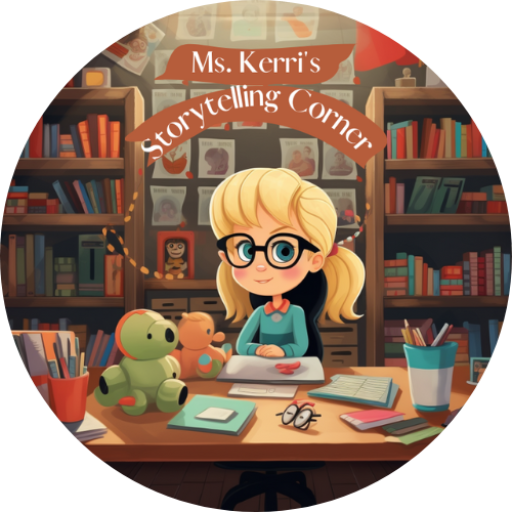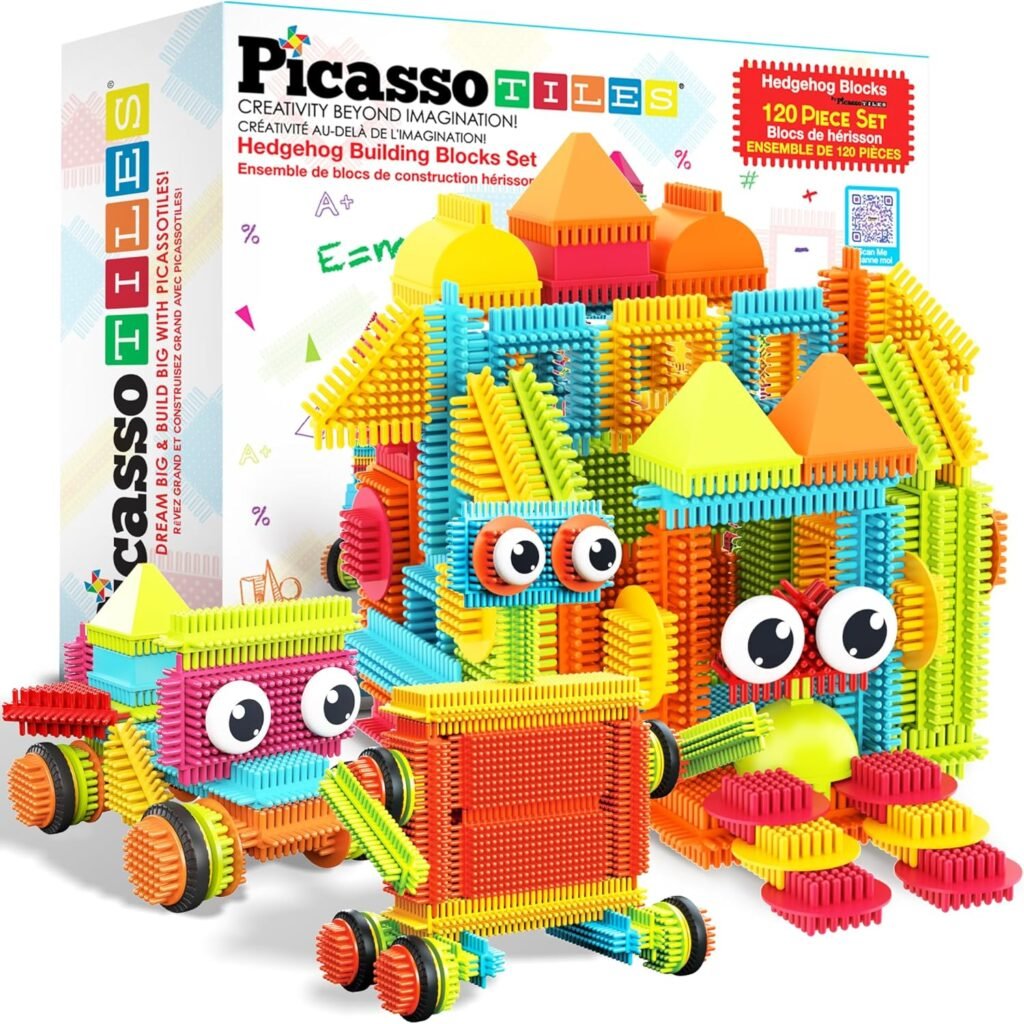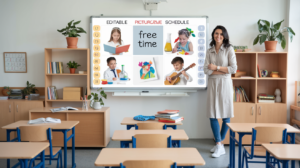
Teaching preschoolers how to resolve conflicts can be both fun and educational. By incorporating games and creative activities, children can learn important skills that will help them navigate disagreements and build healthy relationships. This article explores various engaging methods to teach conflict resolution in a playful way.
Key Takeaways
- Role-playing helps kids understand different perspectives in conflicts.
- Games like Rock, Paper, Scissors can be used to resolve minor disputes.
- Creative activities allow children to express their feelings and brainstorm solutions.
- Books can illustrate conflict resolution in relatable ways for kids.
- Everyday situations can be turned into teaching moments for conflict resolution.
Engaging Role-Playing Scenarios
Acting Out Common Conflicts
Role-playing is a fantastic way for preschoolers to understand and resolve conflicts. By acting out common situations, children can explore their feelings and learn how to communicate effectively. For example, you can create a scenario where a friend doesn’t show up to play as promised. Ask the kids how they would feel and what they might say to their friend when they see them at school. This helps them practice empathy and understanding.
Using Puppets for Conflict Resolution
Puppets can make conflict resolution fun! Have the children use puppets to act out different conflicts and resolutions. This allows them to express their feelings in a safe environment. They can create stories where the puppets face challenges and must find solutions together. This method encourages teamwork and problem-solving skills.
Role-Playing with Storybooks
Using storybooks is another engaging way to teach conflict resolution. Read a story that includes a conflict, then pause and ask the children how they think the characters should resolve it. After discussing, let them role-play the story’s ending. This not only enhances their comprehension but also helps them see different perspectives.
Role-playing helps children learn that conflicts can be resolved through communication and understanding.
By incorporating these engaging role-playing scenarios, you can help your preschooler develop essential conflict resolution skills while having fun!
Interactive Games for Conflict Resolution
Rock, Paper, Scissors
Rock, Paper, Scissors is a classic game that can help kids resolve minor disputes in a fun way. Whether it’s deciding who gets to be first in line or who chooses the next game, this simple hand game teaches children to make quick decisions and accept outcomes gracefully.
Conflict Resolution Card Matching
In this engaging card game, children match conflicts with their solutions. This activity not only reinforces critical thinking but also helps kids learn to associate specific conflicts with appropriate resolutions. Here’s how to play:
- Create cards with various conflicts on one set and their corresponding solutions on another.
- Shuffle and lay them face down.
- Players take turns flipping two cards to find a match.
- When a match is found, discuss why that solution works for the conflict.
Go Fish: Cast Away Conflict
This fun twist on the classic card game Go Fish encourages kids to think about conflict resolution. Players must answer open-ended questions related to conflict before they can collect their cards. This game promotes skills like listening, compromising, and apologizing. Here’s a quick overview of how it works:
- Each player is dealt a hand of cards featuring conflict scenarios.
- Players ask each other for cards while discussing how they would resolve the conflicts presented.
- The game continues until all cards are collected, fostering a deeper understanding of conflict resolution strategies.
Engaging in games like these not only makes learning fun but also equips children with essential skills for handling conflicts in real life.
By incorporating these interactive games into your teaching, you can help preschoolers develop important social skills while having a great time!
Creative Activities to Foster Understanding
Conflict Resolution Journals
Encouraging children to keep a conflict resolution journal can be a great way to help them process their feelings and thoughts. In these journals, kids can:
- Write about conflicts they encounter.
- Describe how they felt during the conflict.
- Reflect on how they resolved it or how they could resolve it differently next time.
This activity not only helps them articulate their emotions but also promotes self-reflection.
Creative Writing and Storytelling
Another engaging way to teach conflict resolution is through creative writing. Kids can create short stories that involve a conflict and its resolution. This can be done in groups or individually. Here’s how:
- Choose a conflict scenario.
- Write a story that includes the conflict and how it gets resolved.
- Share the stories with the class, allowing for discussion on different perspectives.
This method encourages imagination while teaching valuable lessons about empathy and understanding.
Art Projects to Express Emotions
Art can be a powerful tool for expressing feelings. Kids can create art projects that represent their emotions related to conflicts. They can:
- Draw or paint scenes depicting a conflict.
- Use clay to model characters involved in a conflict.
- Create a collage that represents different feelings.
These activities allow children to express their emotions visually, making it easier for them to discuss their feelings and understand others’ perspectives.
Engaging in creative activities not only fosters understanding but also helps children develop essential skills for resolving conflicts in a healthy way.
By incorporating these activities into your teaching, you can help children learn to navigate conflicts with confidence and empathy. Conflict resolution role play allows children to practice resolving conflicts in a safe and guided environment.
Books That Teach Conflict Resolution
Reading can be a powerful tool for teaching kids how to handle conflicts. Here are some excellent books that can help preschoolers learn about resolving disagreements in a fun and engaging way:
Talk and Work It Out by Cheri J. Meiners
This book emphasizes the importance of using words to solve problems. It encourages children to express their feelings and find peaceful solutions instead of resorting to anger.
Enemy Pie by Derek Munson
In this story, a boy learns how to turn an enemy into a friend. This book creatively illustrates how understanding and kindness can resolve conflicts.
Confessions of a Former Bully by Trudy Ludwig
This book helps children understand the perspective of a bully, promoting empathy and deeper understanding. It teaches kids that everyone has their own struggles, which can lead to better conflict resolution.
Let’s Be Enemies by Janice May Udry
This story follows two friends who become enemies due to unresolved issues. It’s a relatable tale that shows how conflicts can arise and be resolved.
Give It Back!
This book focuses on sibling conflicts, teaching kids how to resolve disagreements at home. The skills learned here can also be applied in school and on the playground.
Summary Table of Recommended Books
| Title | Author | Key Theme |
|---|---|---|
| Talk and Work It Out | Cheri J. Meiners | Using words to solve problems |
| Enemy Pie | Derek Munson | Turning enemies into friends |
| Confessions of a Former Bully | Trudy Ludwig | Understanding the bully’s perspective |
| Let’s Be Enemies | Janice May Udry | Resolving conflicts between friends |
| Give It Back! | [Author Not Listed] | Conflict resolution among siblings |
Reading these books can help children see that conflicts are a normal part of life. They can learn to handle disagreements in a healthy way, making it easier to navigate their relationships.
By incorporating these stories into your reading time, you can help your preschooler develop essential conflict resolution skills that will benefit them throughout their lives.
Group Activities to Build Social Skills
Social Skills Group Activities
Group activities are a fantastic way to help children learn social skills while having fun. These activities encourage teamwork and communication. Here are some engaging options:
- Role-Playing Scenarios: Kids can act out different situations to practice resolving conflicts.
- Friendship Activities: Discuss what makes a good friend and how to handle disagreements.
- Listening Games: Activities that focus on listening can improve understanding and empathy.
Listening and Discussion Circles
In a listening circle, children take turns sharing their thoughts on a specific topic. This helps them learn to listen actively and respect others’ opinions. Here’s how to set it up:
- Choose a Topic: Pick a relevant issue or scenario.
- Set Guidelines: Encourage respectful listening and speaking.
- Share and Reflect: Allow each child to share their thoughts without interruptions.
Team-Building Exercises
Team-building activities can strengthen relationships and teach kids how to work together. Consider these:
- Trust Falls: A classic exercise that builds trust among peers.
- Group Challenges: Tasks that require collaboration to solve problems.
- Creative Projects: Working together on art or storytelling fosters teamwork and communication.
Engaging in group activities not only helps children learn conflict resolution but also builds lasting friendships.
These activities are essential for developing healthy social skills, as they provide opportunities for children to practice empathy, communication, and problem-solving in a supportive environment. By participating in these fun and educational experiences, kids can learn to navigate conflicts more effectively, setting the stage for positive interactions in the future.
Remember, the goal is to create a safe space where children can express themselves and learn from each other. Building these skills early on can lead to healthier relationships later in life.
Using Everyday Situations as Teaching Moments
Modeling Conflict Resolution
One of the best ways to teach your preschooler about conflict resolution is by modeling appropriate behavior. When you encounter a disagreement, verbalize your feelings and explain how you plan to resolve the issue. This helps children see how adults handle conflicts in a calm and constructive way.
Discussing Real-Life Scenarios
Engage your child in discussions about real-life situations they might face. For example, if a friend doesn’t show up to play, ask your child how they would feel and what they might do. This encourages them to think critically about their emotions and responses. Here are some questions to guide the discussion:
- How would you feel if someone didn’t come to play?
- What could you say to your friend when you see them?
- How can you find out why they didn’t come?
Encouraging “I” Statements
Teach your child to express their feelings using “I” statements. This helps them communicate their emotions without blaming others. For instance, instead of saying, “You never share!” they can say, “I feel sad when I can’t play with the toys.” This approach fosters understanding and empathy.
Teaching conflict resolution skills is essential for children. It helps them approach challenges with respect and understanding, leading to better solutions.
By using everyday situations as teaching moments, you can help your preschooler develop important social skills that will benefit them throughout their lives. Remember, practice makes perfect!
Fun and Educational Videos
Sesame Street: Robin Williams on Conflict
In this delightful segment, the beloved Robin Williams teaches children about the concept of conflict. Understanding conflict is essential for kids as it helps them learn how to handle disagreements. This video is not only entertaining but also educational, making it a great resource for parents and teachers alike.
Animated Stories with Conflict Resolution
Animated stories can be a fun way to illustrate conflict resolution. Here are some benefits of using animated videos:
- Engaging visuals capture children’s attention.
- Simple narratives make complex ideas easier to understand.
- Characters often model positive conflict resolution strategies.
Interactive Video Lessons
Interactive videos encourage kids to participate actively. They can:
- Answer questions during the video.
- Discuss scenarios with peers.
- Role-play solutions to conflicts presented in the video.
Using videos as a teaching tool can help children learn how to work together and cooperate with others, which is a key skill that is important both at home and at school.
These fun and educational videos can make learning about conflict resolution enjoyable for preschoolers!
Final Thoughts
Teaching preschoolers how to resolve conflicts is a valuable skill that will benefit them throughout their lives. By using fun games and activities, you can help them learn how to communicate better, understand others’ feelings, and find solutions that work for everyone. Remember, the goal is to create a safe space where kids can practice these skills. As they grow, these lessons will help them build strong friendships and handle disagreements in a positive way. So, get started with these games and watch your little ones become confident problem solvers!
Frequently Asked Questions
What are some fun games to teach conflict resolution?
Games like Rock, Paper, Scissors and card matching can make learning conflict resolution enjoyable for kids.
How can role-playing help with conflict resolution?
Role-playing allows children to act out conflicts and practice finding solutions in a safe environment.
Why is it important for kids to learn conflict resolution?
Learning conflict resolution helps kids manage disagreements, build empathy, and improve their social skills.
What books can I read to my child about conflict resolution?
Books like ‘Talk and Work It Out’ and ‘Enemy Pie’ teach valuable lessons about resolving conflicts.
How can I model conflict resolution for my child?
You can share personal stories or demonstrate resolving conflicts calmly in everyday situations.
What activities can I do at home to encourage conflict resolution?
Activities like journaling about conflicts or using puppets to act out scenarios can help foster understanding.

Ms. Kerri’s Corner provides a exciting virtual space for preschool learning. Through a variety of engaging activities, she exposes young minds to early math, literacy, science and social-emotional skills in a developmentally appropriate way. Centers for blocks, art, books and music allow children to explore hands-on learning at their own pace. Guided lessons subtly introduce number sense, letter sounds and narrative thinking. Careful observation gives insight into each child’s progress across domains. Viewers are also invited to participate, reinforcing that their ideas are valued. By making learning fun yet purposeful, Ms. Kerri lays the groundwork for future academic success while fostering creativity and imagination. Her program offers preschoolers valuable screen-based learning experiences.







